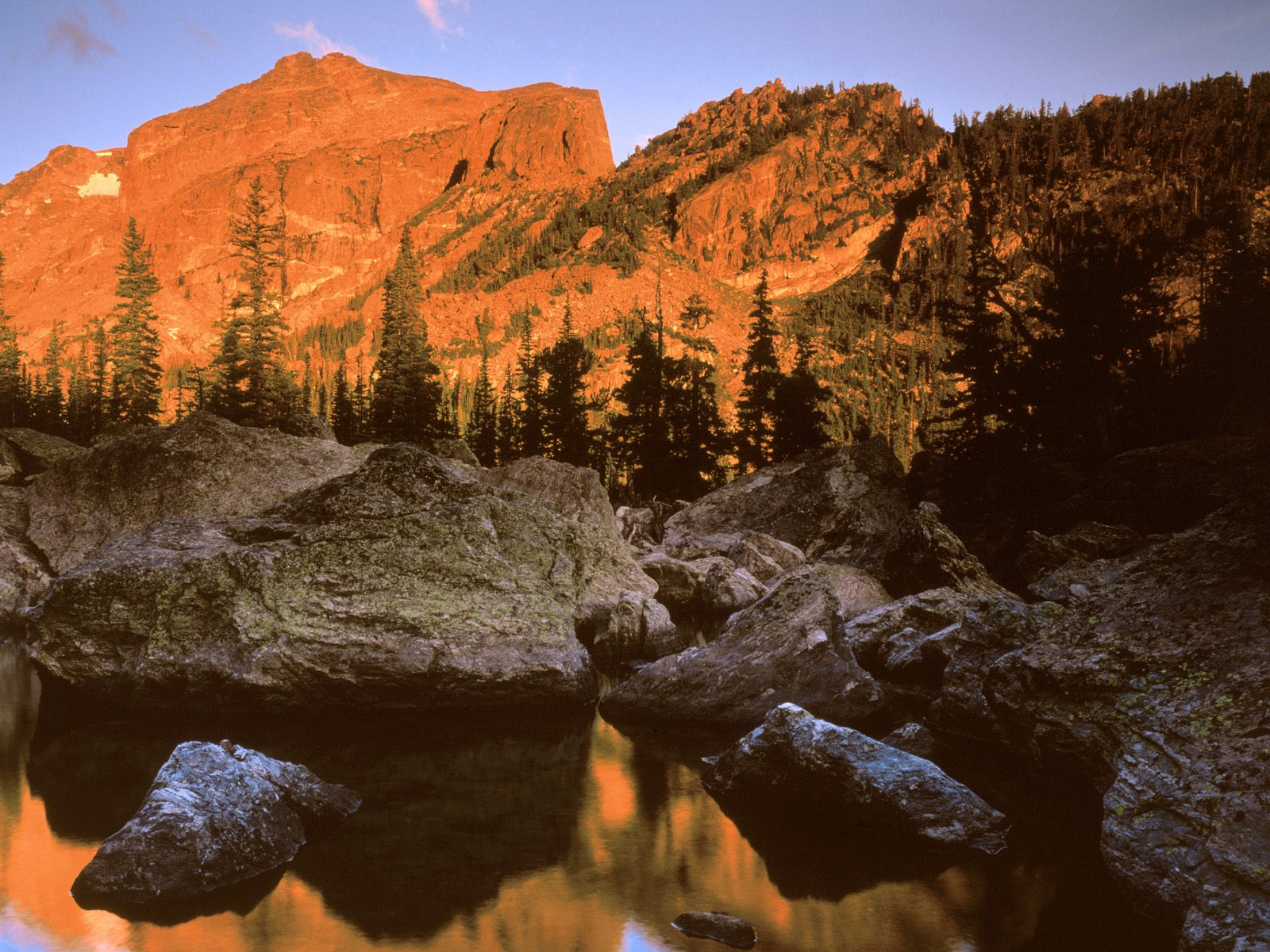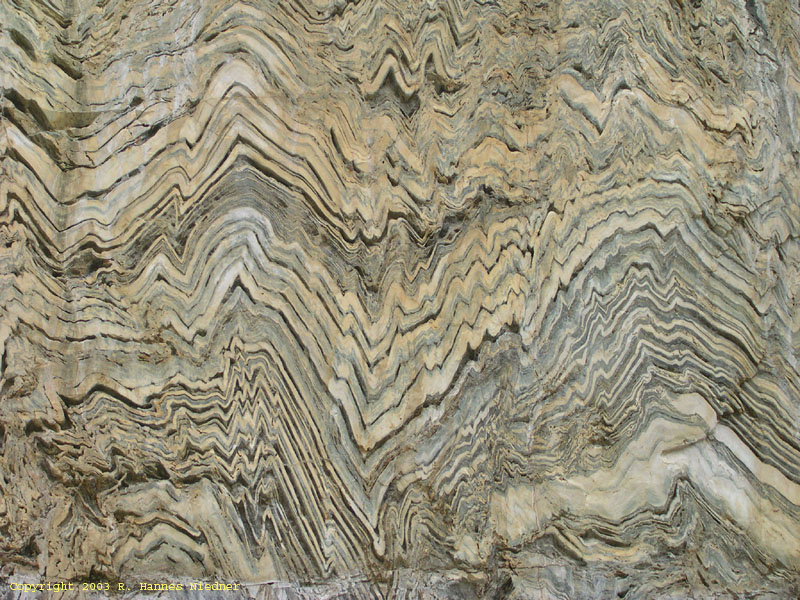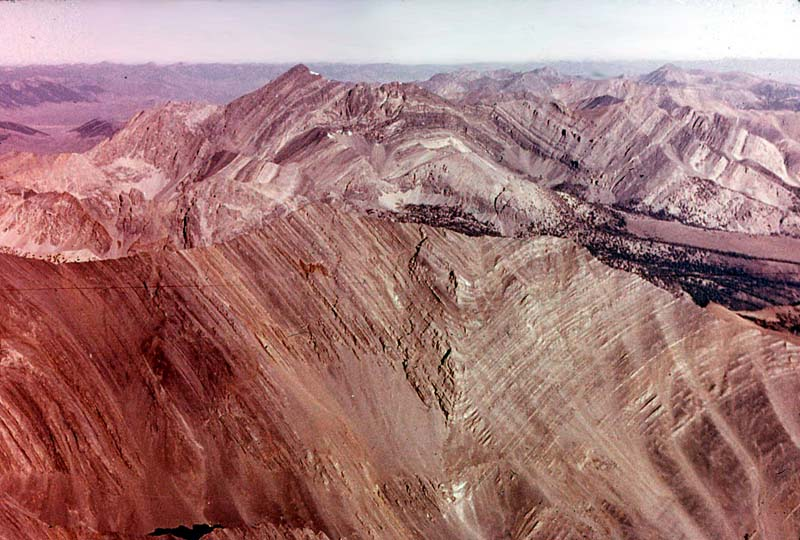 |
Mountain Building |
 |

 |
Mountain Building |
 |


Mountain Range
Deformation or the changing of a rock's shape or size occurs when a force exceeds a rock's fracture point. The majority of rock deformation occurs along plate boundaries where forces generated are large enough to deform the rocks.
There are three ways a rock can deform, folding, fracturing, or flowing. If stress is applied slowly and steadily, the rock experiences elastic deformation. Rocks experiencing elastic deformation are able to return to their original shape and size once the stress is removed. If the strength of a rock is exceeded, past its elastic limit, the rock will experience ductile deformation, flow, or brittle deformation known as fracture.
The strength of a rock can be affected by confining pressure, temperature, rock composition and time. Brittle deformation or brittle failure occurs commonly in rocks at the surface of the Earth. At the surface, the rock experiences low temperatures and a low confining pressure. At higher temperatures and confining pressures, a rock will experience ductile deformation. This solid state flow will allow a change in the rock's size or shape without causing the rock to fracture. Rocks subjected to ductile deformation can exhibit beautiful folding patterns.

Chevron Fold Sierra Mountains
Sedimentary and metamorphic rocks are more likely to undergo ductile flow because they contain areas that are weakly bonded or cemented. Igneous rocks with strong internal molecular bonds tend to experience brittle fracture.
Finally, while the effects of time are difficult to evaluate in a lab setting, it is obvious that stress applied to rocks over time will generate some effect.

Canadian Folds
Back to Geology Main |
Mountain Building Page 2 |
Go To Mountain Building Assignments |